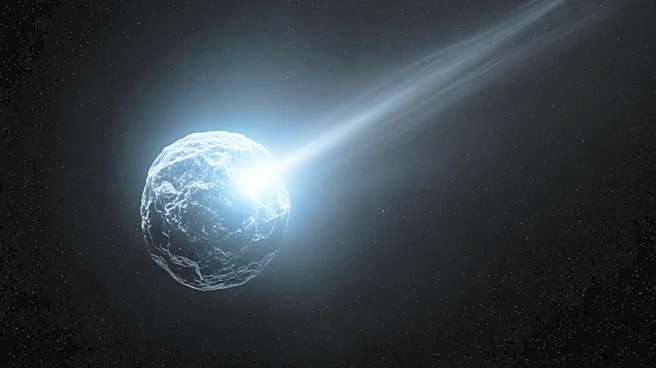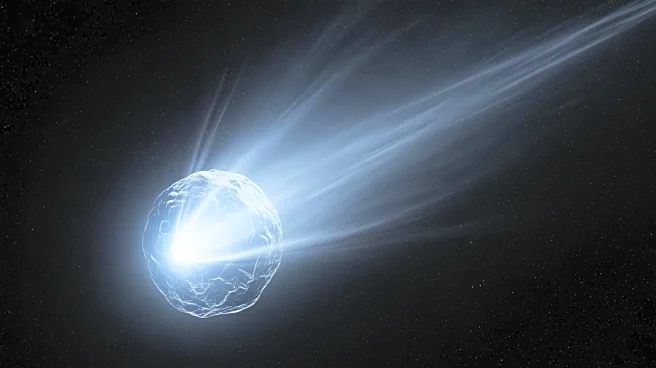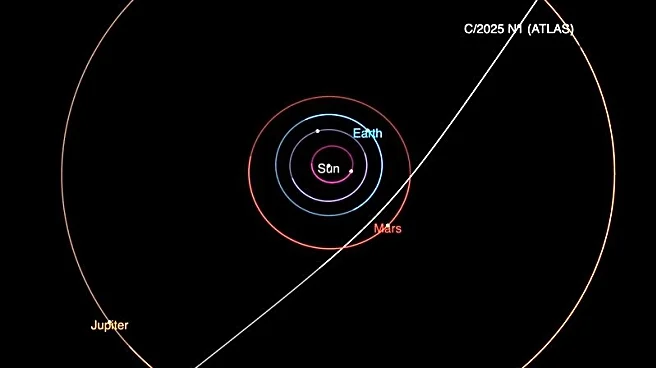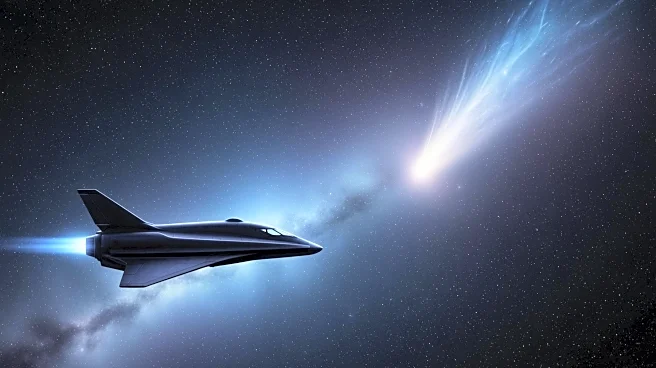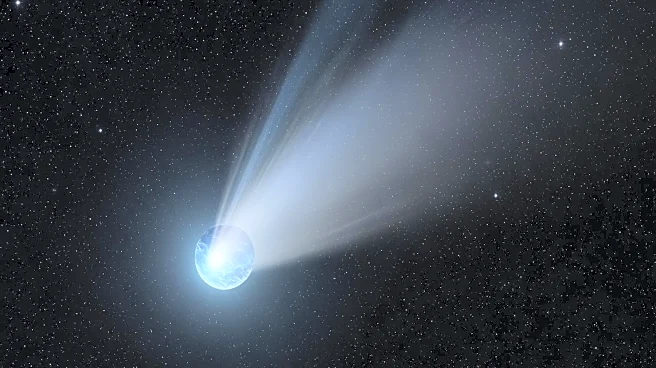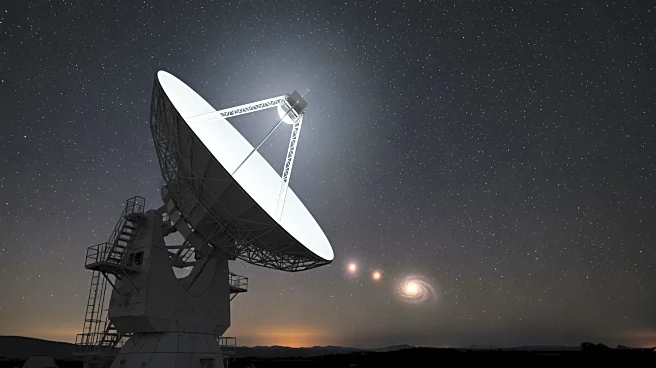What's Happening?
NASA has released new images of the interstellar object 3I/ATLAS, captured by the HiRISE camera on the Mars Reconnaissance Orbiter. The images show the object as a 'fuzzy white ball,' illuminated by the Sun,
and provide the closest look yet at the comet-like visitor. Harvard astronomer Avi Loeb has raised questions about the jets emanating from 3I/ATLAS, noting they point in the direction of motion rather than towards the Sun, which contradicts previous observations. Loeb suggests this could indicate a technological origin, although NASA maintains the object is a natural comet. The object is expected to make its closest pass to Earth on December 19, allowing further observation to determine the nature of the jets.
Why It's Important?
The debate surrounding 3I/ATLAS highlights the ongoing interest in interstellar objects and their potential implications for understanding the universe. If the jets are found to be of technological origin, it could suggest the presence of extraterrestrial technology, which would have profound implications for science and society. Conversely, confirming the object as a natural comet would reinforce current scientific understanding of interstellar phenomena. The upcoming close pass of 3I/ATLAS provides an opportunity for scientists to gather more data, potentially resolving the debate and advancing knowledge in astrophysics.
What's Next?
As 3I/ATLAS approaches its closest pass to Earth, scientists are preparing to use ground- and space-based telescopes to study the object in greater detail. This will involve measuring the composition, speed, and mass loading rate of the jets to determine their origin. The findings could either support Loeb's theory of a technological signature or confirm the comet's natural status. The results will be closely watched by the scientific community and could influence future research directions in the study of interstellar objects.


